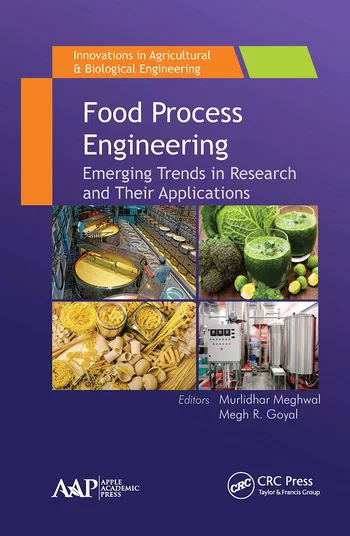Food Waste
How manufacturers can optimize their process to reduce food waste

In U.S. households, around 150,000 tons of food is thrown away every day, working out at roughly one pound per person. And it doesn’t stop there. With some 88 million tons of food wasted in the European Union each year, and approximately a third of produce in Asia resigned to landfills, the food waste problem is an epidemic. Yet the bulk of food thrown away doesn’t even reach consumers.
Let’s take a closer look at the areas of manufacturing that are prone to food waste, and how they can be optimized to help tackle the issue.
According to the Food and Agriculture Association (FAO), in order to feed the growing population, food production will need to have increased by 60% from 2005 to 2050. Yet, if the amount of food wasted around the world was reduced by just 25%, there would be enough to feed all those currently suffering from malnourishment. Food manufacturers play a major role in reversing food waste, not only by influencing supplier and end consumer behaviors, but with direct and tangible action in their own operations.
Keeping cool while cutting waste
The global population is set to grow by 30% by 2050, and it is thought that 68% of people will be living in urban areas. In other words, many of us will be moving away from our food sources, which presents additional logistics and storage challenges when trying to maintain an unbroken cold chain.
After fruits and vegetables, meat and dairy are the most wasted edible products. Keeping food cold is important to ensure its safety and quality, as well as to extend its shelf life. Failure to provide the necessary temperature conditions for a food item has a direct influence on the product, which can be hazardous to consumers. For example, inadequate chilling of cooked meat or failure to maintain the cold chain can lead to microbiological growth, making the product no longer safe for consumption.
Additionally, more food is wasted as a result of inefficient refrigeration in developing countries than in developed ones. As the journey of food from the factory to fork changes, it is vital that manufacturers adapt and ensure effective refrigeration throughout a product’s lifecycle, while acting to provide an effective cold chain in all parts of the world.
Make the right predications
From sudden snow blizzards and blazing heatwaves, to social media campaigns encouraging plant-based lifestyles and national holidays, a plethora of factors influence consumer purchases. Manufacturers need to be aware of such impacts, as they affect forecasting and inventory.
Stocking more turkeys at Christmas and Thanksgiving is obviously a smart move. However, if margins are miscalculated and too much of a perishable ingredient is ordered, manufacturers are left with substantial amounts of unused product.
With better and more accurate forecasting models, food manufacturers can spend less time guessing and more time maximizing the potential of the ingredients they already have.
Picking to perfection
Despite recent supermarket campaigns that promote misshapen and imperfect vegetables, if products don’t match up with aesthetic ideals, or are damaged during picking and palletizing, they are often thrown away.
In the past, delicate products, such as fruits and pastries, have been difficult for robots to handle without causing damage. Today, advances in automation have meant that robots, such as ABB’s FlexPicker, are able to handle goods with the same degree of care as human hands, but with greater efficiency and the ability to manage several picking and packaging tasks simultaneously.
Shifting dynamics
In addition, the average household no longer fits the typical two adults, two children mold. In fact, the United Kingdom Office of National Statistics found that 28% of U.K. households have only one inhabitant, while the number of single person households in the U.S. has been increasing since the 1920s. This shift in dynamics places a higher demand for single-portion servings.
To reduce unnecessary waste, packaging needs to reflect the change in demand. The introduction of snap-pack packaging means only a certain amount of a food product needs to be opened at once, while the rest can maintain freshness for longer by remaining sealed. But the risk of food waste can happen long before the product sits on supermarket shelves.
Fixing power quality
Food production is delicate. Therefore, even slight power disruptions from the grid, which interrupt production processes can lead to a lot of food wastage. Disruption of machines in food production and refrigeration can mean large quantities of food being burnt, spoiled or contaminated, meaning that, due to stringent health and safety regulations, they must be discarded. This can escalate fast in a continuous production system because if even one piece of equipment goes out of sync and is not caught quickly, a large quantity of products will go to waste.
Disruptions from low power quality can cause machinery to shut down in an unsafe manner. Low power quality is when power supplies are disrupted and no longer power machinery properly, such as drops in voltage. These are sudden increases in current that cause voltage to drop over the impedance of a supply network, causing the voltage to vary. Voltage drops can result in damage to machinery that may require parts to be replaced or can lead to severe health and safety issues.
Food manufacturers understand that reducing food waste is a key method for creating a strong operation. The main way to reduce food waste is to have good control over processes. However, improper shutdowns for smart machines can damage internal systems, scrambling the data and leading to faults and loss of precision.
Modern methods of increasing control through software and improved monitoring cannot have the desired effect if they are damaged through grid disruptions. As a result, plant power quality should be closely monitored to prevent any unexpected interruptions.
With an ever-increasing number of mouths to feed and growing pressure to improve sustainability, there really is no time, or food, to waste. As consumers, we all need to act to reduce the amount of food we buy and fail to use. However, there is also a greater responsibility for manufacturers to review and optimize their processes in order to help make the most out of our resources.
Looking for a reprint of this article?
From high-res PDFs to custom plaques, order your copy today!









